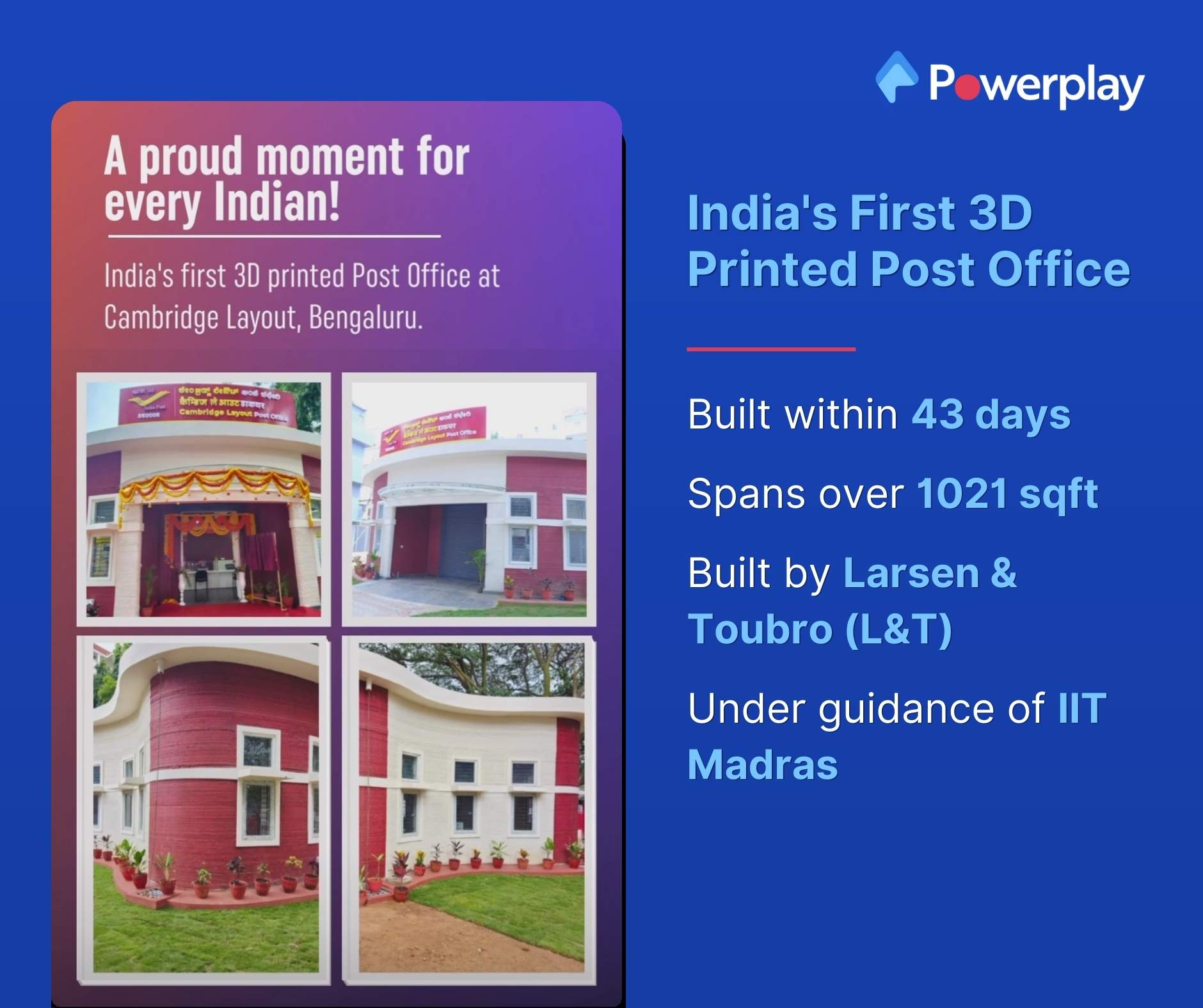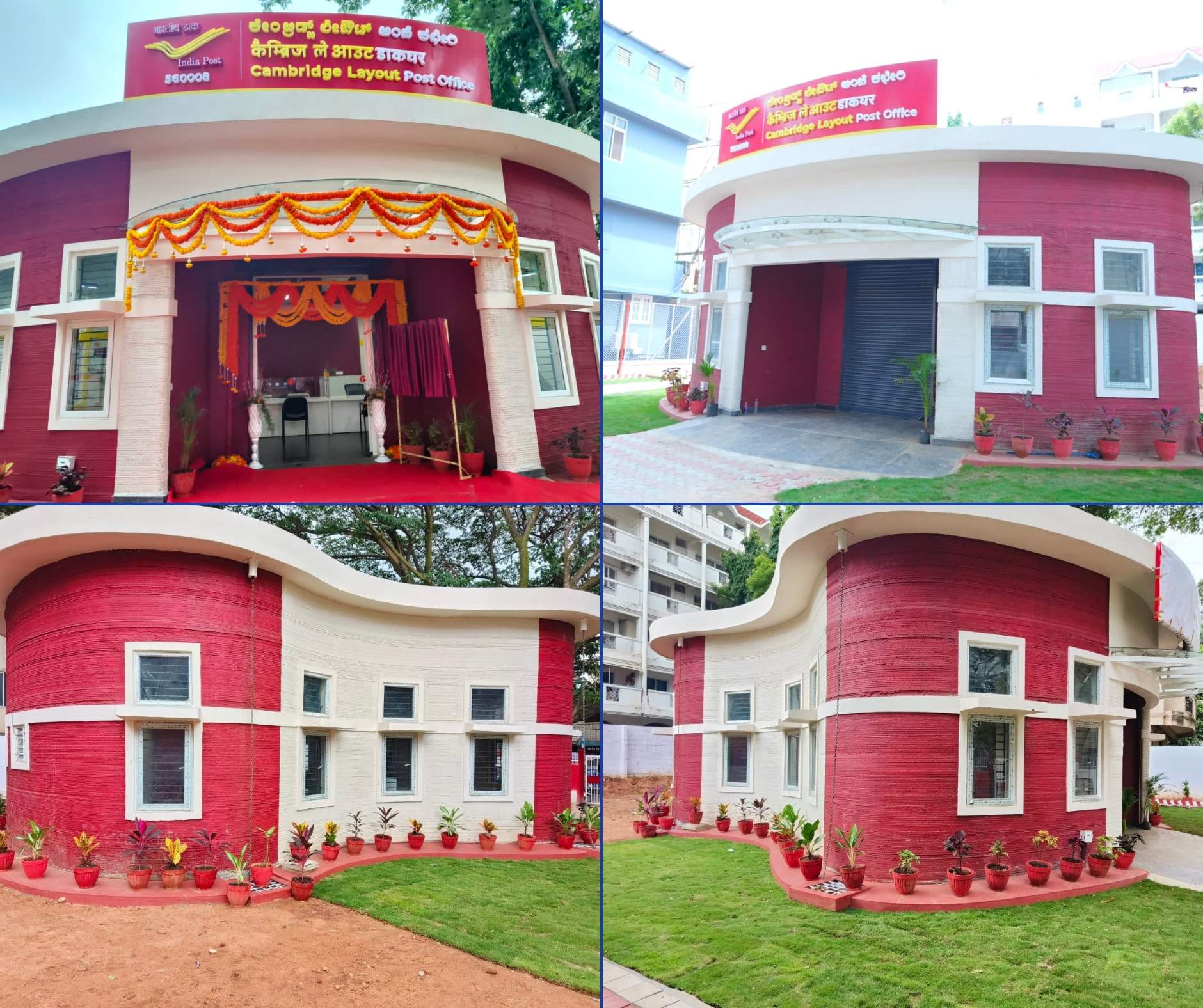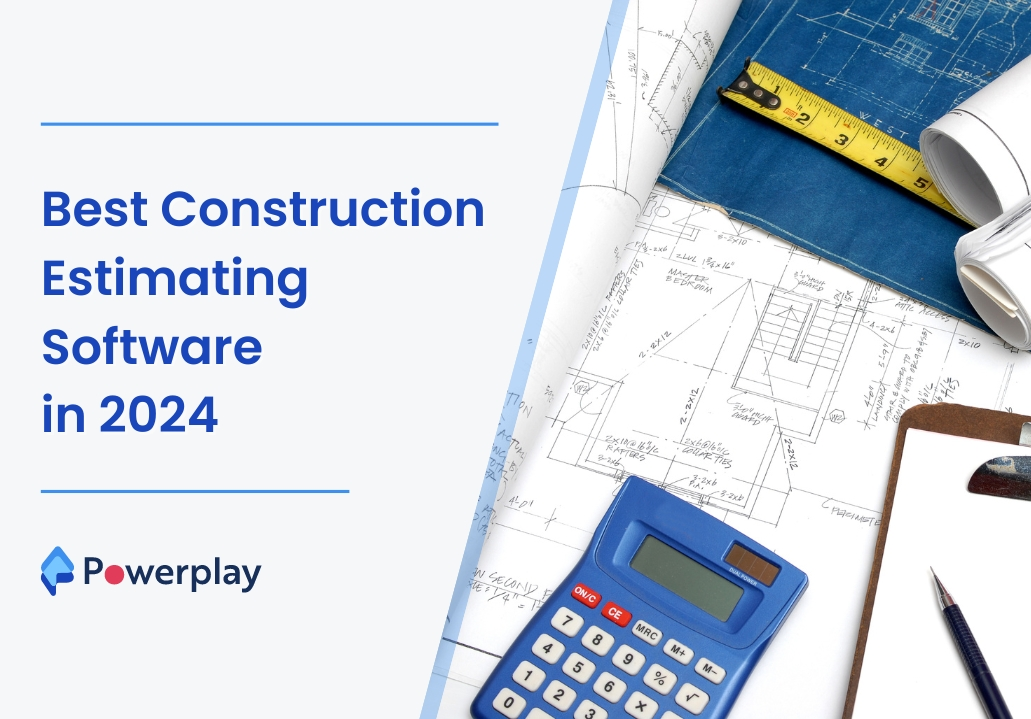India’s first 3D-printed Post-Office in Bengaluru: A milestone in Indian Construction
-
Kumar Abhishek Anand
- October 11, 2023

Table of Contents
ToggleA Historic Inauguration
Today marked a significant milestone in India’s construction landscape as the nation witnessed the inauguration of its first 3D-printed post office in Bengaluru’s Cambridge Layout by Union Minister Ashwini Vaishnaw. This achievement is not just about a building; it’s a testament to the transformative power of 3D-printed construction. As a technology, 3D-printed construction offers a paradigm shift, promising faster build times, reduced waste, and a level of precision previously unattainable in traditional construction methods.

The Global Evolution of 3D-printed Construction
The evolution of 3D printing in construction has transformed from a pioneering concept to a practical solution. As technology advanced, the world witnessed the emergence of 3D-printed structures that were not only functional but also architecturally significant. For instance:
1. In China, a 5-story apartment block was constructed using 3D printing, showcasing the scalability of this technology.
2. Dubai, a hub for innovative construction, boasts a 6,900 sqft 3D printed administrative building and a 2,600 sqft office complex, marking its commitment to integrating 3D printing into mainstream construction.
3. Germany houses a compact 2-story residence, exemplifying the adaptability of 3D printing for residential purposes.
4. Belgium’s 3D-printed house, built with COBOD BOD2, slashed building time by 60%, merging efficiency with modern design.
5. Addressing Africa’s housing and education deficits, Malawi’s 14Trees utilized COBOD’s BOD2 to produce sustainable, affordable homes and schools.
These examples underscore the global construction industry’s shift towards 3D printing, recognizing its potential to tackle housing challenges, diminish environmental footprints, and offer cost-efficient alternatives.
Bengaluru’s 3D-printed Marvel
The 3D-printed post office in Bengaluru stands as a beacon of innovation. Completed in a mere 43 days, two days ahead of its deadline, this structure spans over 1,021 square feet. Constructed by Larsen and Toubro with technical guidance from IIT Madras, the project exemplifies the efficiency and precision of 3D printing in construction. The choice of 3D printing technology for this project was driven by its cost-saving potential and the ability to deliver quality at speed.

Tech-Powered Efficiency
The driving force behind this rapid construction was 3D concrete printing technology. Unlike conventional methods, this technology employs a robotic printer to deposit layers of concrete according to the approved design. The use of specialised concrete with quick-hardening properties ensures solid bonding between layers, expediting the construction process. Thanks to this tech-powered efficiency, the post office’s construction took merely 43 days, a stark contrast to the 6-8 months needed by conventional means.
Cost-Effective Solutions
Furthermore, the use of 3D printing technology led to substantial cost savings. The entire construction was accomplished at a cost of Rs 23 lakh, translating to a reduction of around 30-40% compared to conventional methods. This cost-effectiveness makes 3D printing an attractive option for future construction projects.
Promising Prospects for Low-Cost Housing
Beyond the post office project, there’s a larger vision to harness 3D printing technology for low-cost housing solutions. The Chief Postmaster General of Karnataka Circle envisions a future where post offices are constructed using this technology, sparking interest in affordable housing. With plans to build post offices in remote areas using this innovative approach, the potential for this technology’s broader application becomes evident.
The Future of 3D-printed Construction
The success of the 3D-printed post office in Bengaluru is a clear indicator of the vast potential 3D-printed construction holds, not just in India but globally. As urban populations swell and the demand for infrastructure grows, 3D-printed buildings offer a sustainable and efficient solution. With its ability to revolutionize the construction process, 3D-printed construction undoubtedly holds one of the keys to the next generation of construction technologies.
As we marvel at India’s first 3D-printed post office, we are also looking at the future of construction – a future that is sustainable, efficient, and innovative.
Share
Kumar is a digital content professional with more than 2 years of experience in Blog writing, copywriting and scripting. His passion lies in the art of creating convincing content that plays a major role in converting leads for SAAS businesses.












